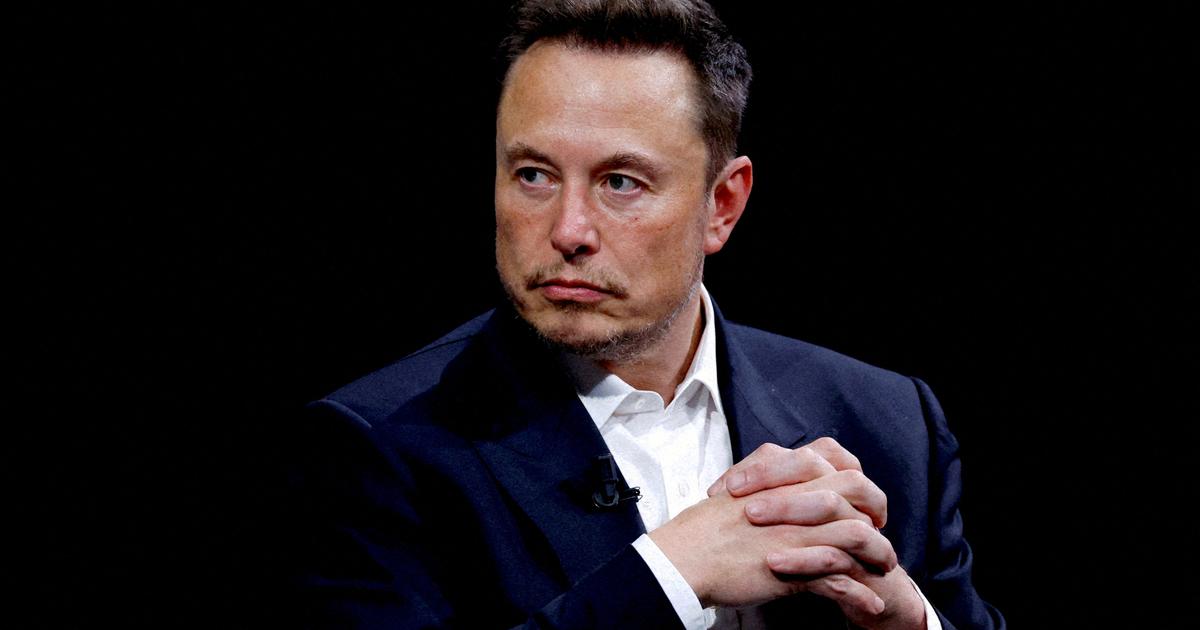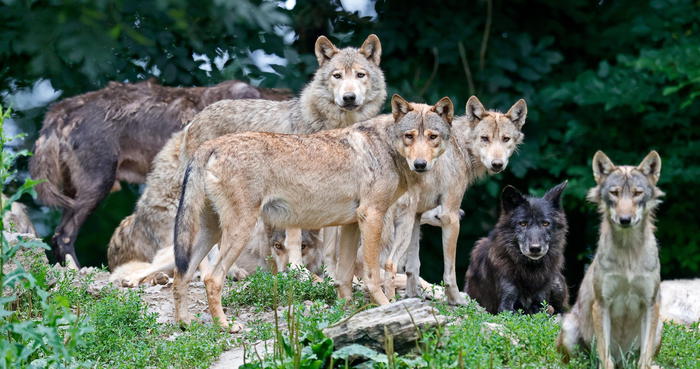March 15, 2019 was the biggest day in YouTube history.
A terrorist was about to enter a mosque in Christchurch, New Zealand.
That day he would kill 50 people, but before starting the massacre, still in the car, he connected his camera.
Before leaving, he said: "Remember, fellas, subscribe to Pewdiepie."
That phrase was a meme about who was then the biggest
youtuber
on the platform.
But uttered by a terrorist before opening fire, it wasn't funny.
Not only that: YouTube had been the killer's preferred platform in his
learning
from him.
“Until not long ago, virtually no one took YouTube seriously,” writes American journalist Mark Bergen in his book
Like, Comment, Subscribe,
subtitled
Inside YouTube's Chaotic Rise to World Domination
, for now without translation into Spanish.
It is the closest thing yet to a story of the platform.
In March 2019, the platform got serious: “An employee told me that the world would watch YouTube history before these reviews the way we look at cars before seatbelts,” says Bergen.
Until then, YouTube had played ambiguously with the videos it allowed on its platform.
The revision of the rules changed and the company began to take more seriously where the red lines were.
Racist extremism was no longer going to have it so easy.
More information
Everything the greatest 'youtuber' in history learned from virality
"It was one of his biggest calls for attention in terms of content moderation," Bergen tells EL PAÍS by video call from London, where he has just moved.
“Perhaps the pandemic, and the murder of George Floyd and the
Black Lives Matter
movement in the US, were the other two significant ones.
They really changed their rules and their system.
Today it looks like a totally different platform.”
What was YouTube like and what has been its impact?
In her book, Bergen traces the path that goes from the founding of the platform by three young people in 2005, who created something that seems obvious today (a page to post videos), but which was much more complex then.
They didn't do it from a garage, but they had quite a few rats among the pizza boxes.
In 2006, Google was trying to outdo Youube with Google Video, but they never succeeded.
It was easier for them to buy it.
At barely a year old, YouTube had its own character, where almost all users uploaded videos: “Years before Instagram
influencers
and TikTok stars, these young creators invented a new model of fame, attracting audiences not yet accustomed to spending hours of his days hopping absentmindedly on the internet,” Bergen writes.
Google in 2006 was already a millionaire giant.
The YouTube fit was difficult.
From the beginning its complex, contradictory and erroneous decisions began that have led the platform to what it is today, which is at the level of the audiovisual competition that ridiculed it in 2006.
Few could have thought that the combination of internet video and unleashing the creativity of millions of people in front of a camera could change the course of entertainment: “It was a radical change in how we think about entertainment.
It is undeniably true that it has given careers to people who didn't have them and might never have had them in traditional media,” says Bergen.
These have been some of his decisions, milestones and findings in the rise of YouTube in these 18 years:
1. The 'youtubers' arrive
“It's hard to imagine CBS or Netflix airing a video of a trans woman ripping off Hegel in lingerie or Hammurabi's code with cat-eye contact lenses,” Bergen writes.
Youtubers is
something
that would never have existed without YouTube.
Few executives would have believed that a kid making jokes in front of a screen or someone talking about obscure theorems for 2 hours could interest millions of people.
Today the biggest
youtuber
is Mr. Beast, who barely appears in the book due to his recent success.
His videos are incredible (“I survived 50 hours in Antarctica” and “1,000 blind people see for the first time” are the last two) and are somewhat closer to the YouTube original, which Bergen describes several times as the “dogs on skateboards” era. , with the sense of funny videos and little else.
“Mr Beast is fascinating and I don't think I get it very well,” says Bergen.
“You should talk to 12-year-olds to understand it.
It's like he's a little charismatic, but not quite.
He basically operates like a machine: he studies all the data and optimizes from thumbnails to how to make videos,” she adds.
2. YouTube is not only made of 'youtubers'
YouTube is today a great repository of human memory, as the book says.
It is difficult to remember a World Cup play, a youth song, someone playing video games or a funny video and there is not a copy on YouTube.
Its search engine is the second most used in the world, after Google, the company that owns YouTube.
But there are two other categories that have special weight on YouTube, according to the book: children and educational channels.
Some children's channels earn more than traditional
YouTubers
: at the end of 2020, the five most watched channels were for preschoolers.
YouTube found, for example, that millions of children could endlessly watch videos of anonymous hands opening surprises or another child playing games they wanted.
On Ryan's World, probably the most popular children's channel, there is a video of surprise eggs and a slide that has been viewed 2 billion times.
The most popular Mr. Beast video has been viewed 378 million times.
This children's hit spawned highly successful channels featuring bizarre relationships between adults in celebrity costumes and other shady variants, in some cases with lewd comments under the videos.
Here too YouTube had to take decisive action.
But it wasn't just YouTube.
The US government also applied a law that limited the benefits of these channels for advertising: “The only real regulation in the US is the COPPA law, which defends children's privacy.
Everything else has been for now talk for talk.
those
weird channels
they were something they should have seen from within.
From what I understand, there are executives who were surprised by what was happening and I think that speaks to their being pretty naive about how the world works and how their platform works with us,” says Bergen.
The educational part of YouTube has been, according to Bergen, "a missed opportunity."
“They tried many times to become a big brand in the education market, to get to the resume, but they couldn't,” says Bergen.
“There are a lot of educational creators who make a lot of money from ads, but they haven't gone mainstream or invested in them,” she adds.
3. The two most significant decisions
When YouTube was a few years old, its management made two decisions that led to a chain of events and what it is today: change the metric from clicks to "time viewed" and pay creators half of the advertising revenue generated by their videos. videos.
Clickbait
suddenly ended
, with misleading headlines, and millions of people tried to create content that could interest the audience of the platform.
“People probably think time is a better metric, but they didn't think about the consequences, the side effects, like security or content moderation,” Bergen says.
“The problems were in a different category: before it was
spam
, now it was hate speech or misinformation,” she adds.
Something similar happened with paying creators: suddenly YouTube had white supremacists and suspected pedophiles as “business partners”.
"It is, although in a different order, what is happening now to Spotify with Joe Rogan," says Bergen.
4. A celebration of engineering
In 2010, 100 hours of video were uploaded to YouTube every minute.
Nobody imagined that this was technically possible a few years before: a common joke on YouTube at the beginning was that the platform was going to break the internet.
In 2020 that figure had multiplied by five.
YouTube's servers are so reliable that companies upload entire hidden camera loops and leave them private, Bergen explains.
Making YouTube work has been a key to its success.
“It wasn't their only priority because during their first decade they were also concerned with the business side, but most of all they were concerned with making it work,” says Bergen.
“[Google co-founder] Larry Page's obsession was limiting the upload speed, making sure it could be viewed instantly, with no latency.”
5. Why it has been undervalued
Susan Wojcicki, YouTube leader for ten years until February 2023, never went to Congress to testify.
After the election of Trump, in the middle of the crisis of the networks, YouTube did not attract attention.
White and Islamic extremism, disinformation, hate speech, lived calmly on the web for years.
His motto was that the audience rules and that if someone wanted to see a video that said unpleasant things, it would be for a reason.
“It is a ship without a rudder and without a clear point of view about its absolutely momentous role in the general geo-social-political landscape,” said an employee at the time.
Why was YouTube spared?
Bergen sees several reasons.
One, videos are more difficult to analyze than Facebook or Twitter posts.
Two, it's part of Google, which already had other, more serious antitrust-related problems.
Three, politicians have used it more as a service, like Maps or searches, so it didn't seem dangerous.
For the youngest, on the other hand, it is their television.
And fourth, Wojcicki's discretion was important.
“For a senator it was better to have a statement messing with Mark Zuckerberg because he sold more.
Most had an opinion about him.
But an average voter doesn't know who Wojcicki is.
In the book I tell that someone in Washington wanted to schedule some meetings for him but nobody knew who he was, ”explains the journalist.
You can follow
EL PAÍS Tecnología
on
and
or sign up here to receive our
weekly newsletter
.
Subscribe to continue reading
Read without limits
Keep reading
I'm already a subscriber

/cloudfront-eu-central-1.images.arcpublishing.com/prisa/CV7WN6ROJVFUJL2GAOBSD3DB3E.jpg)







